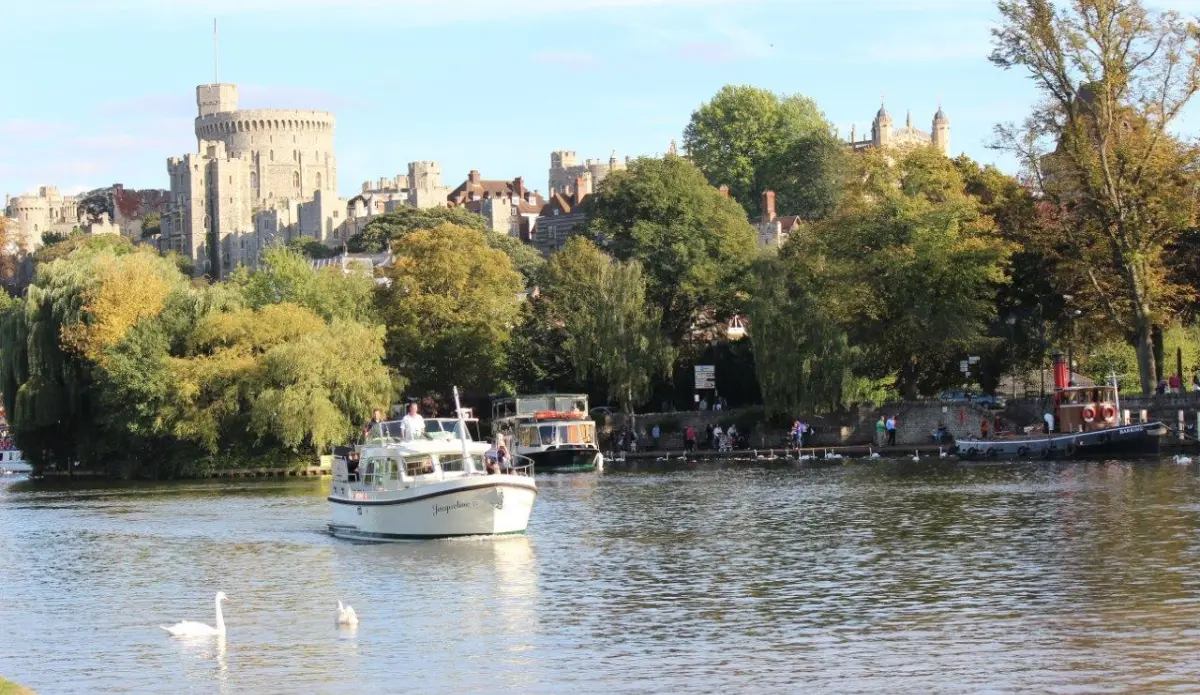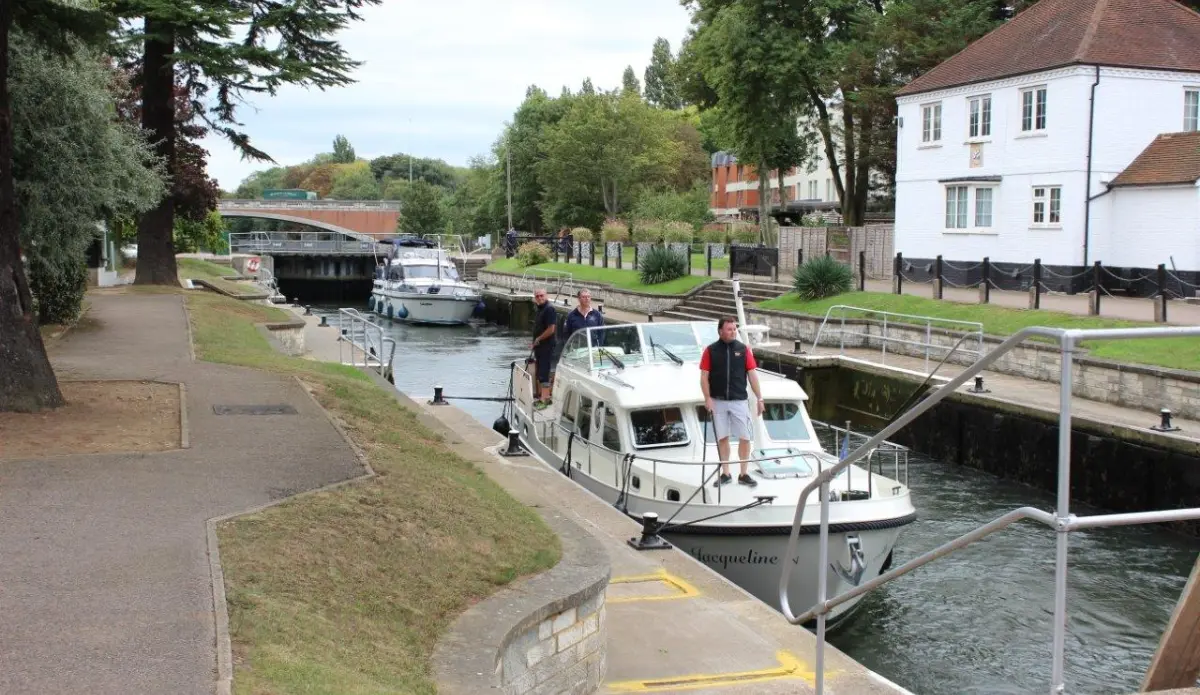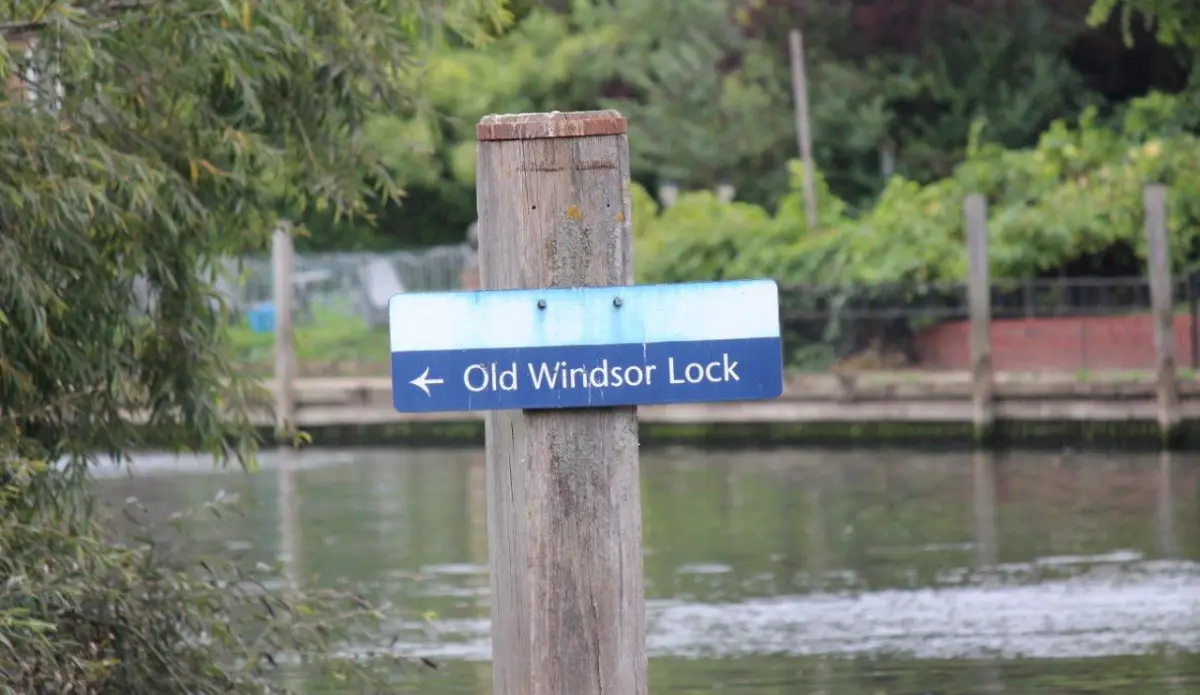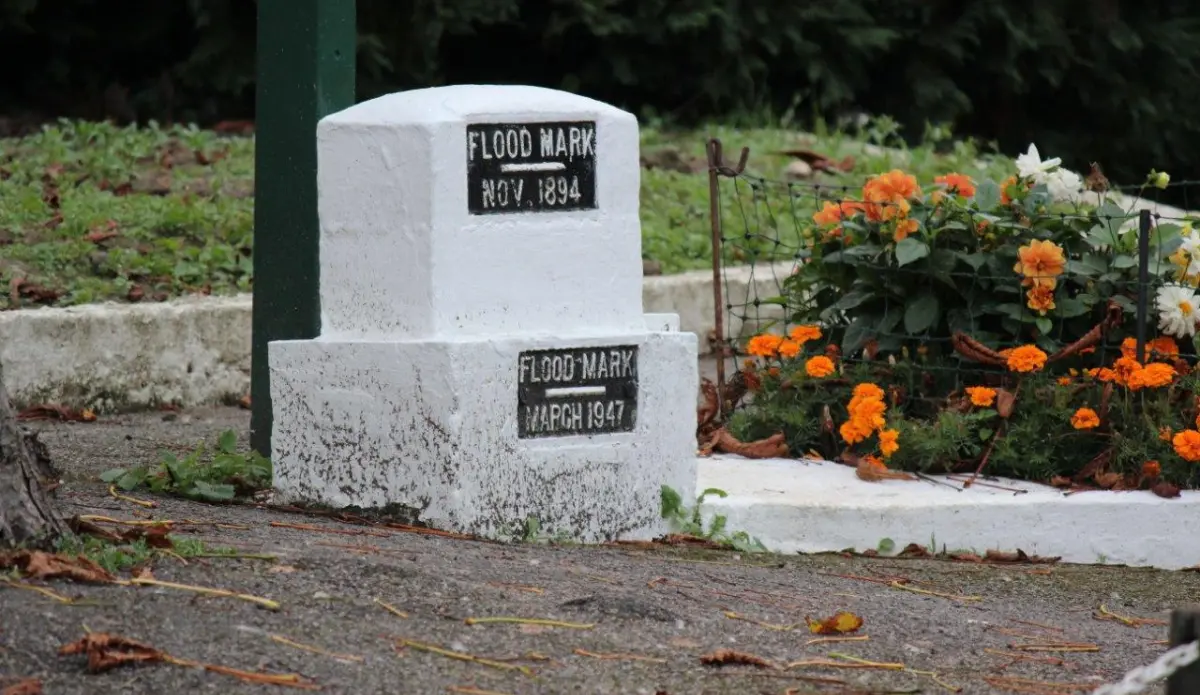Four men and a Linssen motorboat on the river Thames
- Details
From the Linssen Boating Holidays charter location Hobbs of Henley, you can steer your Linssen self drive motoryacht along the beautiful river Thames. You can go east bound in the direction of London and discover places like Maidenhead, Windsor, Windsor Castle, Runnymede and Hampton Court Palace. Or you can travel West/North to the famous University city of Oxford and the Cotswolds. The Linssen self drive motoryacht is fully equipped with everything you need for a longer stay with up to 6 people. All you need to bring are your personal belongings. Groceries can be bought at local shops.
At about ten in the morning on Saturday 5 October, we arrived in Henley-on-Thames, the home base of Linssen Boating Holidays’ partner Hobbs of Henley. The fact that the Hobbs boatyard can look back on 140 years of receiving guests quickly made itself apparent. Our Linssen motoryacht – the “Jacqueline IV” – was moored there waiting for us, with neatly made beds and with every luxury on board, in between a number of boats that absolutely radiated nautical tradition. It is a Grand Sturdy 36.9 AC with two cabins and four berths. Plenty of room for the four of us to stay comfortably. The compact kitchen has everything we need to prepare our own food and breakfast.
While the first “narrowboats” glided past our mooring, Jonathan Hobbs took us on board one of the firm’s gems, the passenger vessel “New Orleans”. This “sternwheeler” looks like it would be more at home on the Mississippi than on the Thames, with its impressive paddlewheel at the stern and its high smokestacks just aft of the wheelhouse. The New Orleans isn’t actually steam-powered, but it still has all the appeal of a real paddle steamer. All that was missing were the Southern belles with their crinolines, big sunhats and parasols, accompanied by their beaus in bespoke suits and top hats, smoking a big cigar.
Before we’d even been in Henley for half an hour I knew that it was going to be an exceptional adventure: “Four Men in a Boat” and surroundings exuding the grandeur of the Victorian period, topped with a hearty serving of nautical tradition in a region where hospitality is still something that people take seriously.
The town of Henley is situated in Oxfordshire. It is home to just over 10,000 people and also to the Leander Club, the oldest rowing club in the world. The club organises one of the world’s most prestigious rowing competitions, the Henley Royal Regatta. This five-day event runs from Wednesday to Sunday at the end of the first week of July. Entry to the regatta at the Leander Club’s grounds is very expensive. The site is completely sealed off and admission is solely for club members and their guests, on condition that they appear in the prescribed attire.
After visiting the New Orleans and having a nice cup of coffee at the riverside coffee house, we embarked. At about noon, we cast off and proceeded downstream, without really knowing how far we would be going. In fact, there wasn’t really much choice: around here, the Thames doesn’t have any navigable tributaries, so you just go either upstream or downstream.
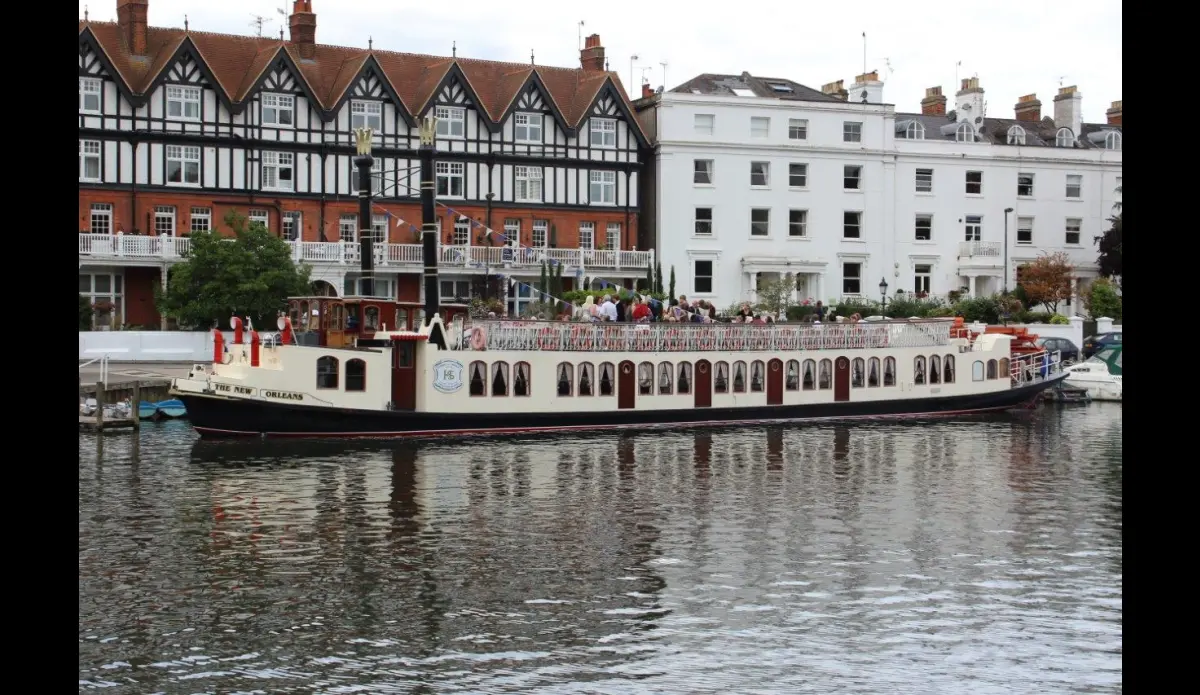
Midsomer Murders
I was quite surprised when Peter turned out to recognise some of the places that we passed, even though he’d never been there before. It soon turned out that he is a big fan of the TV detective series “Midsomer Murders”, with Chief Inspector Barnaby. All the filming for the series took place in the picturesque landscape along this stretch of the Thames. You can even take a special Midsomer Murders tour to visit the most important filming locations. What a lot of fans don’t know is that “Midsomer” isn’t a village but is meant to be a county with lots of villages, all located in the area around Henley-on-Thames. One of the episodes – Dead in the Water – was filmed mainly in Henley itself.
Half an hour’s cruising brought us to our first lock, Hambleden Lock. It wasn’t immediately clear whether we needed to operate the lock ourselves or whether the lock keeper would do it for us. But there was no lock keeper to be seen. Because it was about teatime, we quickly concluded that he was away having tea somewhere, so we decided to take ourselves through the lock. Less than a quarter of an hour later, we were able to continue downstream.
The river wound before us through the picturesque landscape. Wide meadows full of sheep, weeping willows that seemed to be admiring themselves in the tranquil water, magnificent villas with impressive boathouses and typically English gardens, where it seems as if the grass has been cut with nail clippers and the box hedges shaved by a barber. There were so many different impressions to take in that we actually became a bit speechless. It’s hard to express the charm of this area in words.
After cruising for some four hours, and passing through four charming little locks, we arrived at the marina at Bourne End. We moored by the fuel station, parallel to the navigation channel. Bourne End is a small town with the air of a village – or is it the other way round? The harbourmaster was extremely welcoming and gave us various “tips for tourists”, focusing particularly on the best places to eat or go for a drink. After buying groceries for breakfast, we went to the local Chinese restaurant and had a delicious “number 74”. At about one in the morning, we turned in for our first night on board.


Row row, row your boat...
At about 7.30, I was rudely awakened by the shouts of someone right next to the boat. It sounded like an officer giving orders to his troops, and it sounded pretty commanding. I rushed up on deck to find out what was going on. To my surprise, there was nothing suspicious – just the mirror-like Thames, veiled in thick mist. In fact, the mist was so thick that I couldn’t see the other side of the river, even though it’s only fifty metres wide at this point. In the meantime, I had been joined on deck by Paul and Peter, who were rubbing the sleep out of their eyes.
Once more, we heard voices from the mist. Now there were two or three, and they were approaching rapidly. Suddenly – as if from nowhere – an eight appeared, not even ten metres from our Jacqueline IV. It swept past us, followed by a little motorboat in which the coach was shouting commands to the lady crew.
Isn’t that a bit dangerous? You’re facing backwards, you’re in thick mist, and you’re going at top speed... And in fact – not two minutes later – another eight bashed into our swimming ladder. Fortunately, nobody was hurt and no equipment was damaged.
The moral of this story is therefore: on Sunday morning, certainly if its misty, try to stay as far as possible out of the navigation channel of the Thames, at least if you want to have a nice quiet breakfast.
After a lengthy breakfast, we cast off about noon and continued downstream. It was a lovely sunny day – summery rather than autumnal. The scenery was very similar to what we had seen the day before. Magnificent villas with beautifully tended gardens, boathouses that could sometimes only be distinguished from real houses because they were built in the water. The typical narrowboats, the absence of any commercial vessels, the extreme friendliness and helpfulness of the lock keepers... in brief, everything made us feel welcome.
In the late afternoon, we arrived at Windsor, the town famous for its castle. We wanted to spend the night in Windsor but we were surprised to find that there was nowhere to moor. On the left bank there were a few shallow-draft boats tied up by a meadow, but the 1-metre draught of our Linssen meant that there was no way for us to get ashore. Fortunately, Jonathan Hobbs had warned us about this kind of thing before we set off, and had said we should phone him if we ran into any problems. Half an hour later, we were tied up alongside the “Barking”, a splendid classic steam-powered tug, and under the shade of Windsor Castle. Talk about being privileged!
Windsor
At Windsor, we also noticed the large number of swans – hundreds! It was like an invasion. They all belong to the Queen, and in the third week of July each year all the swans along the Thames are counted. A law going back to the twelfth century states that all unmarked swans in English open waters belong to the monarch. The annual census – “swan upping” – is to keep track of how many there are. Swans traditionally made for a tasty banquet, and the law was to ensure that farmers, townies, and country folk kept their hands off the royal birds. Swans are no longer on the menu, but the swans are still inspected and counted at various places along the Thames by the Queen’s Swan Warden.
A prominent part of the scene at Windsor is of course the castle. It is in fact the largest still inhabited castle in the world, and has been lived in for more than 900 years. It occupies a site of about 5 hectares. Most British monarchs since the eighteenth century have used it as a second residence because they preferred to actually live at Buckingham Palace in London. (By the way, the Queen didn’t seem to know we would be coming because she wasn’t at home.)
At about midnight, passing by the sleeping swans, we made our way back on board our motoryacht via the deck of the Barking. We needed to get up early the next day because the crew of the Barking wanted to get underway early, on their way upstream to a get-together of traditional vessels. When we woke up at 9 o’clock, they had already been stoking the boiler for two hours. The whole vessel was glowing with the heat, and puffs of smoke were coming out of the chimney. They wouldn’t actually be leaving for another two hours, so we had time for a “full English breakfast” at an inn just below the imposing castle.
At 11 o’clock we cast off and wished the crew of the Barking a safe journey upstream, while we ourselves set off downstream. After passing under the bridge that connects Windsor and Eton, we came to Romney Lock. Immediately after going through, we came to a little marina with places for passing vessels. We could in fact have spent the night there. For the next half hour, we were still passing the estate surrounding Windsor Castle. It was certainly impressive, but we found ourselves wondering who on earth mows all the grass, because the grounds looked just as neat and tidy as the other gardens that we’d seen so far.
Classic steam-powered tug “Barking”
As big fans of steel-hulled boats, we were naturally impressed by the Barking, but its crew were also pretty impressed by our Linssen. We noticed an elderly gentleman who was constantly moving around the Barking with an oil pump. He didn’t say much and was concerned mainly with his vessel. It later turned out that he had been born in the same year that the Barking was built, namely 1928. The hull of the Barking is entirely held together with rivets, and the vessel is in its complete original state. Getting up steam consumes 250 kg of coal every three hours. Under the gunwales of the ship there is room for a total of three tonnes of coal. When using coal as fuel, it’s very important to keep the ship balanced.
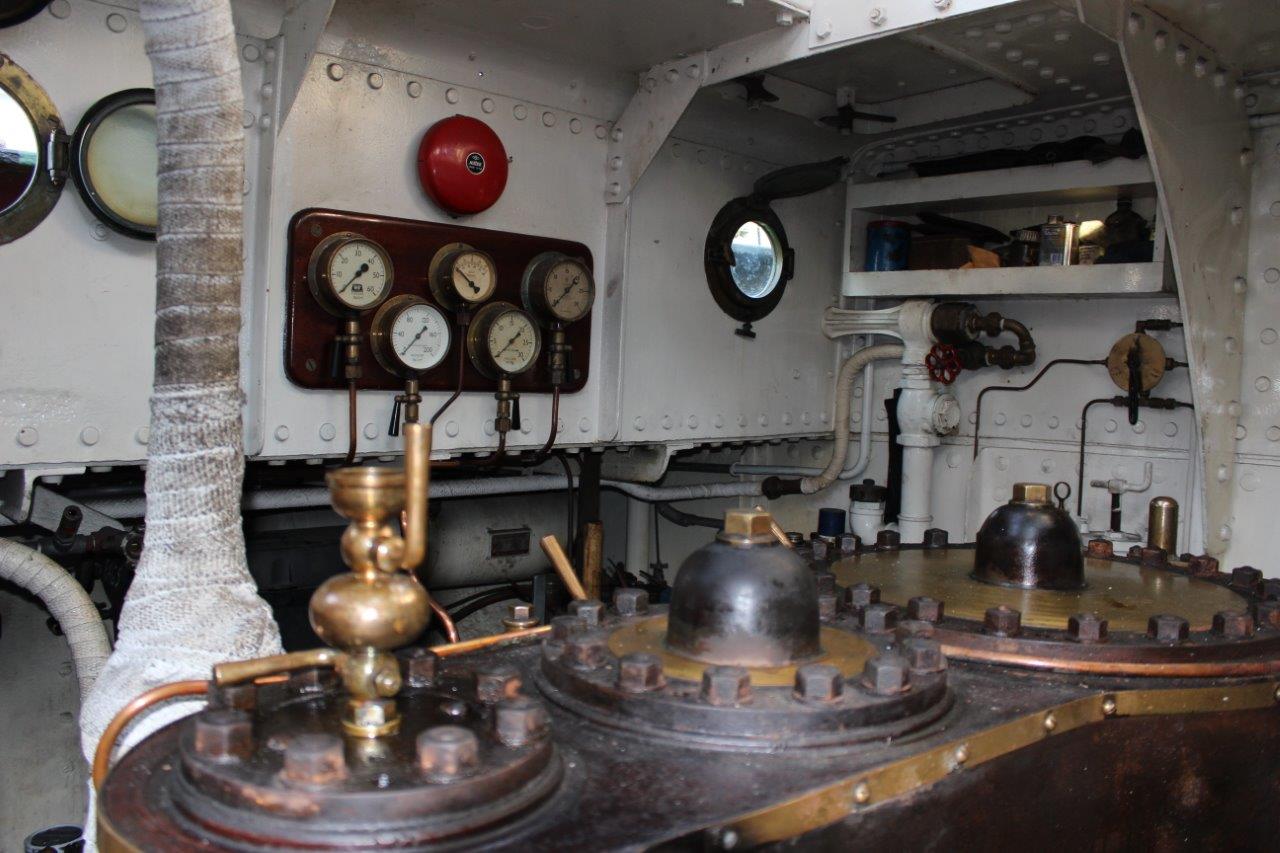
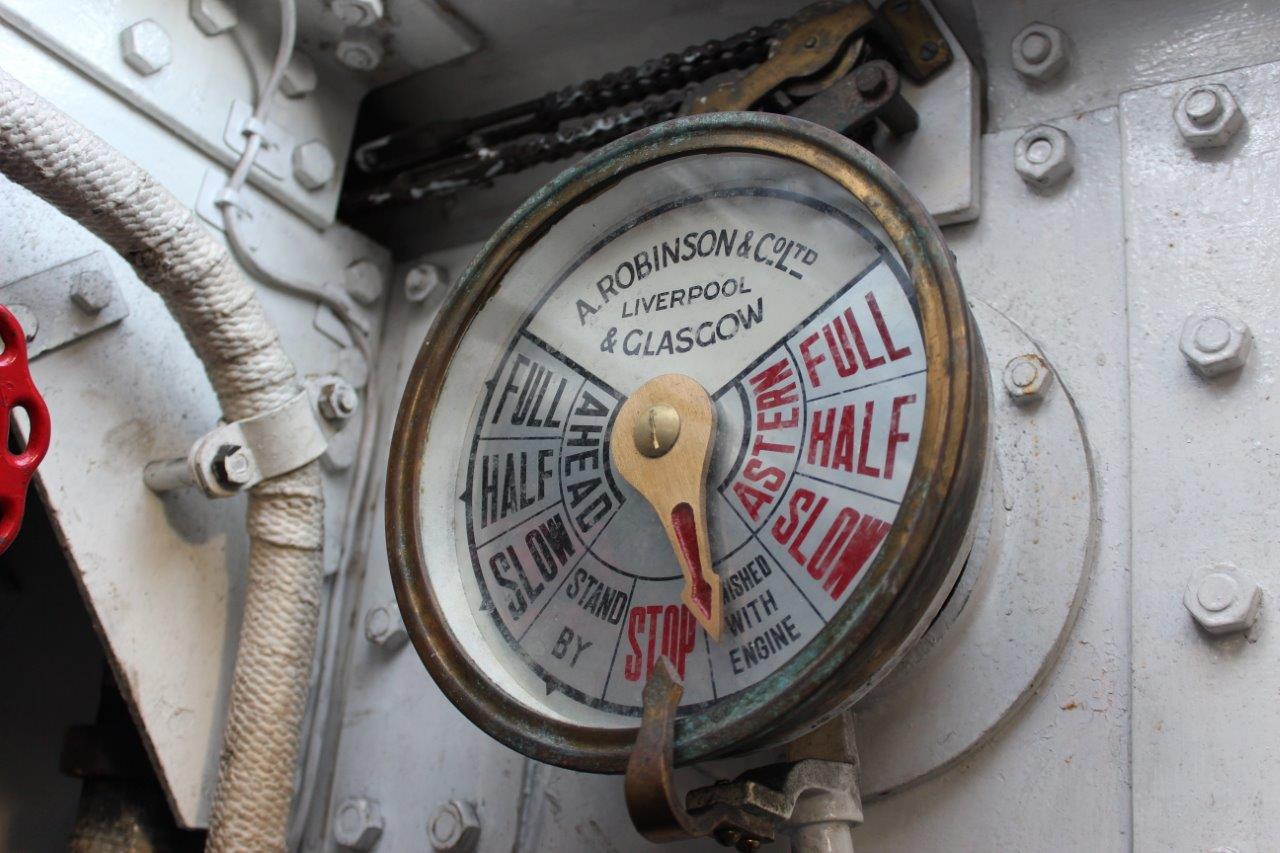
Our journey that day took us to Shepperton Marina, one of the last harbours before you get to the tidal stretch of the Thames, where you are almost in London. Shepperton Marina is a full-service marina with 455 berths. Mooring there gives you certain privileges at the nearby Holiday Inn hotel. From here, we would need to travel back upstream, because our trip would end in three days time and we needed to go all the way back to Henley-on-Thames.
The next morning, we already cast off at 10 o’clock. We wanted to cruise a bit past Windsor and visit Maidenhead. On the way, we stopped for lunch at the Swan Hotel in Staines. The hotel is situated by the water, with a really nice terrace overlooking the river.
After lunch, we continued on to the quayside at Boulter’s Lock, just east of Maidenhead. Boulter’s Lock is one of the best-known locks in the area, first being built in 1772. A rowing race that took place there at the end of the eighteenth century is described in Jerome K. Jerome’s Three Men in a Boat (To Say Nothing of the Dog). We dined at “The Boulters”, which is situated on the quayside by the lock. This restaurant offers really excellent cuisine, as is shown by its two “fork-and-spoon” pictograms in the Guide Michelin.
Dining at The Boathouse at Boulders Lock
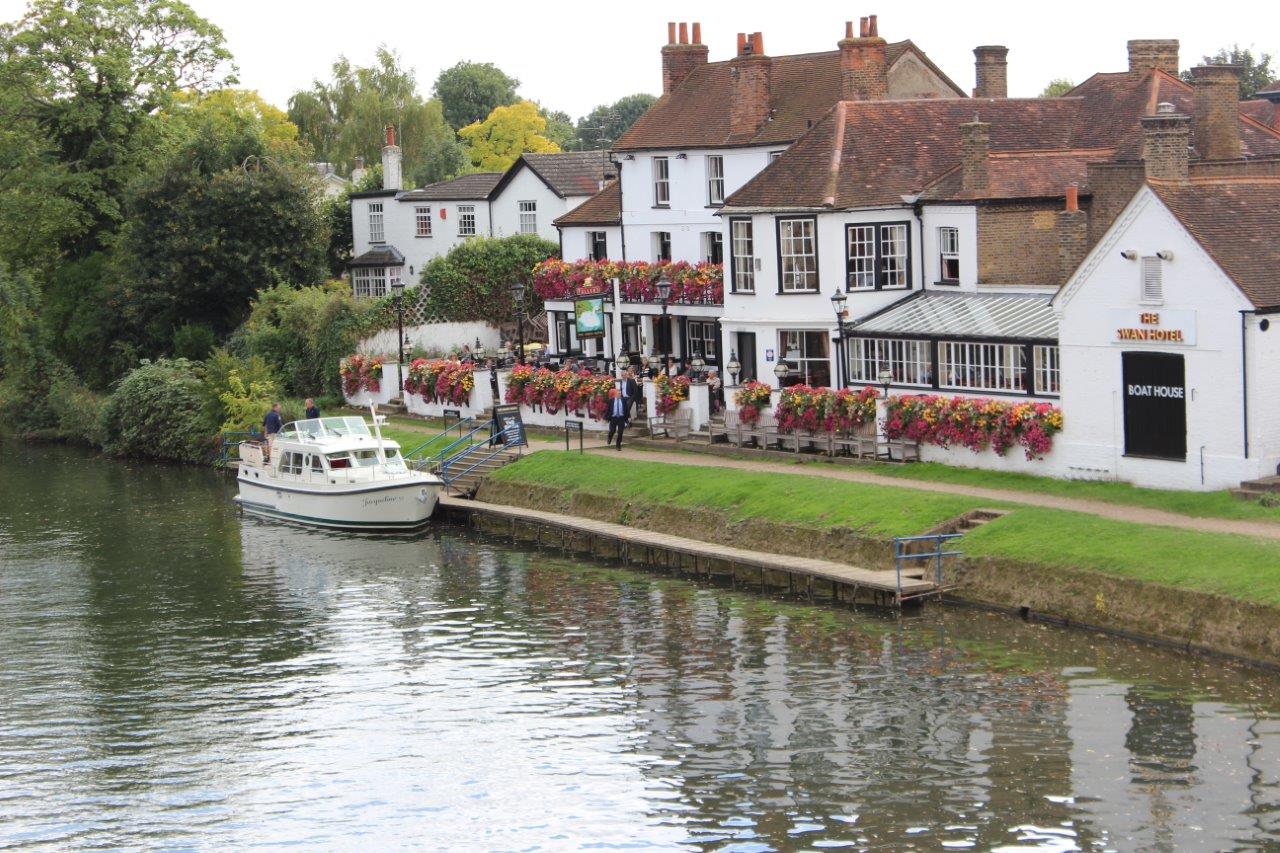
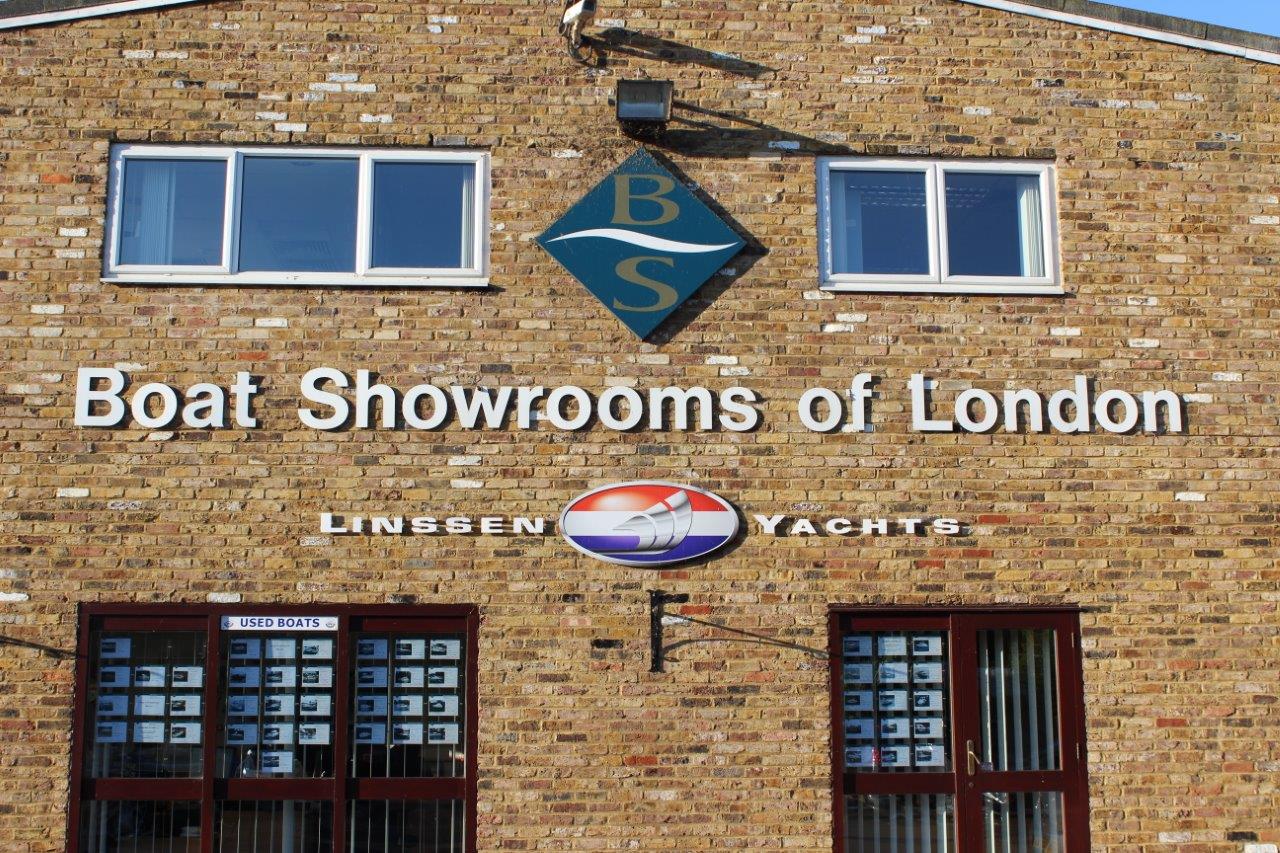

Maidenhead and Marlow
In the morning, we looked around Maidenhead itself but we found it a bit disappointing. There wasn’t really much to see, so we were soon back on board our motoryacht: the Linssen Grand Sturdy.
From Maidenhead, we reached the little town of Marlow in two hours. Just upstream of the bridge in Marlow were a few moorings for passing traffic. We decided to stop there and explore the town. Marlow is definitely worth seeing. It is familiar locally for its micro-brewery, the Rebellion Beer Company. This was started by two students in 1993 and is now famous far beyond Marlow because its beers have won several national and international awards. A large number of Marlow pubs serve the brewery’s pale ale, and its special “Smuggler” and “Mutiny” beers.
After a stroll around Marlow, we cruised on to Harleyford Estate, which is situated in a picturesque location off to the side of the Thames. There has been a marina here since 1950, in between the Temple and Hurley locks. The estate is a kind of park with residential properties and holiday homes and is just a short walk from Marlow. We had the final dinner of our trip at the “Showboat”, a restaurant on an old barge. After a splendid meal, we enjoyed the last of our stock of wine on the stern deck of the Jacqueline IV. The next day, we returned the boat to Hobbs of Henley and our special adventure came to an end.
In preparation for the trip, I had read Jerome K. Jerome’s Three Men in a Boat, which was published back in 1889. Even after 120 years, it still gets across the atmosphere of this stretch of the Thames, where time really seems to have stood still. When doing my research for this article, I found that in 1900 Jerome published a sequel to Three Men in a Boat, namely Three Men on the Bummel, which is about a group of pals who go for a trip through Germany…
Text and photographs: Luc Vanthoor
Published in Linssen Magazine no. 44, October 2014


